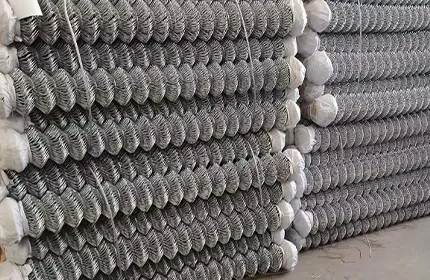-
 Phone:
Phone: -
 Email:
Email:

Installation of Rockfall Netting for Enhanced Slope Stabilization and Safety Measures
Rockfall Netting Installation A Comprehensive Guide
Rockfall netting is an essential measure in civil engineering and geotechnical work, aimed at preventing the dangerous occurrence of rockfalls in hilly and mountainous regions. As the demand for safety in construction sites and roadways increases, it becomes imperative to understand the installation process, benefits, and challenges associated with rockfall netting systems. This article will delve into the intricacies of rockfall netting installation, its purposes, and considerations for successful implementation.
Understanding Rockfall Netting
Rockfall netting is a passive protective measure used to stabilize slopes and prevent loose rocks from falling into vulnerable areas, such as roads, railways, and populated areas. The primary components of a rockfall netting system include high-tensile steel cables, nets, anchors, and additional hardware. These components work together to form a barrier that securely holds any potential rockfall material, thus minimizing safety hazards.
Assessment and Planning
The initial step in the installation process involves a thorough site assessment. Engineers and geologists must analyze the specific terrain, geological composition, and potential rockfall risks. This assessment typically includes
1. Site Surveys Conducting topographical surveys to understand the layout of the land. 2. Geological Studies Identifying rock types, fracture patterns, and soil mechanics to ascertain which areas are at risk of rockfalls. 3. Risk Analysis Evaluating the frequency and size of potential rockfalls to design a system that can withstand the force of falling debris.
Based on the data collected, a comprehensive plan is developed that outlines the specifications of the netting system, including dimensions, materials needed, and installation methods.
Installation Process
The installation of rockfall netting is a multi-faceted procedure that requires skilled labor and specialized equipment
. Here are the key steps involved in the installation1. Site Preparation Clearing the area of loose debris and vegetation to provide a clean workspace. This step often involves using machinery to maneuver large rocks and boulders.
2. Anchor Placement Drilling holes into the bedrock or unstable slopes to install anchors. These anchors must be strategically placed to provide optimum support for the netting system. Depending on the slope’s angle and material, bolt anchors or ground anchors may be used.
rockfall netting installation

3. Net Installation Once the anchors are in place, high-tensile netting is stretched across the area. The net must be secured to the anchors in such a way that it can adequately contain any falling debris. The netting needs to be installed in layers, with appropriate tension maintained to ensure it performs under physical stress.
4. Reinforcement and Maintenance After installation, the netting system may require additional reinforcement in areas known for frequent rockfalls. Regular inspections and maintenance are also critical to ensure the system's integrity over time, as wear and tear can compromise its effectiveness.
Benefits of Rockfall Netting
The implementation of rockfall netting systems offers several advantages
1. Enhanced Safety By preventing rockfalls, netting improves safety for motorists, pedestrians, and construction workers. 2. Cost-Effectiveness Investing in rockfall netting can potentially save lives and reduce property damage, ultimately proving more cost-effective than repairing damage caused by rockfalls. 3. Environmental Protection Rockfall netting can help stabilize slopes and minimize erosion, contributing to environmental conservation.
Challenges and Considerations
Despite its benefits, rockfall netting installation poses challenges
1. Site Accessibility Difficult terrain can impede the installation process, making it necessary to employ specialized equipment and skilled workers familiar with such environments. 2. Weather Conditions Inclement weather can delay installation schedules, and certain weather conditions may necessitate suspension of work for safety reasons.
3. Budget Constraints The initial costs for materials and labor may be significant, but it is essential to view these costs as an investment in long-term safety and infrastructure integrity.
Conclusion
Rockfall netting installation is a vital aspect of ensuring safety in areas prone to landslides and rockfalls. Through careful planning, a structured installation process, and ongoing maintenance, communities can reduce the risks associated with falling rocks. By prioritizing safety and environmental protection, rockfall netting serves as an effective solution in preserving infrastructure and protecting lives.
-
Reinforce Your Projects with Versatile Hexagonal Wire MeshNewsSep.12,2024
-
PVC WireNewsSep.12,2024
-
Maximize Your Closet Space with Clothes Hanger WireNewsSep.12,2024
-
Enhance Safety and Stability with Premium Rock Netting SolutionsNewsSep.12,2024
-
Bucket Handle WireNewsSep.12,2024
-
Baling Wire: Your Ultimate Solution for Securing and BundlingNewsSep.12,2024
-
What’s the Cost of Securing Your Property? Breaking Down Barbed Wire Fence PricesNewsAug.30,2024








